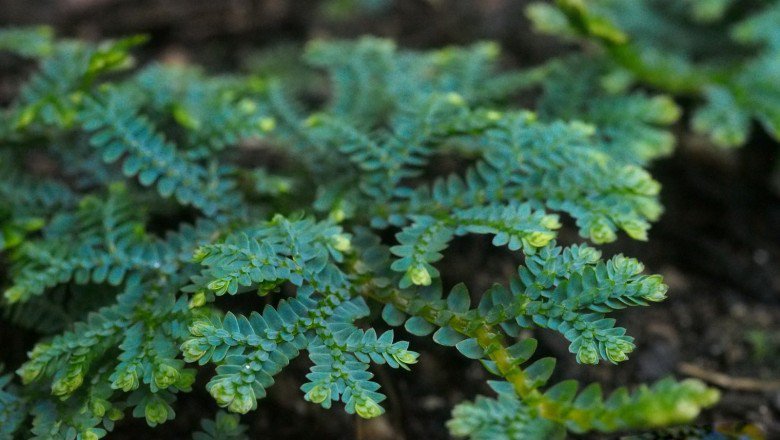Uses of Licorice Slab
Licorice is also known as Northern Licorice, Lo Licorice. Licorice is a medicine used in both Eastern and Western medicine, in addition, it is also used in beverage production technology. So what is licorice leaf used for? What should be noted when using it to be effective and safe?
1. What is licorice slab?
Licorice (Glycyrrhiza uralensis Fisch) is a medicinal plant of temperate mountains, distributed mainly in China, Mongolia, Russia and Afghanistan. Licorice belongs to the legume family, is a perennial plant, about 1-1.5 m tall. The whole body has very small hairs. Leaves 2 - 5.5 cm long, compound leaves with odd feathers, consisting of 9 - 17 leaflets, ovate, pointed tip, whole margin. Flowers pale purple, butterfly-shaped, about 14-22 cm long. The fruit is curved crescent-shaped with a width of 6 - 8 cm and a length of about 3 - 4 cm. The fruit is dark brown, hairy on the surface of the fruit. In the fruit there are from two to eight small flat seeds of gray-brown or light green, glossy surface.
Roots are usually harvested in late autumn or winter, from 3-4 year old trees. At this point, the roots are firm, heavy, powdery, and of good quality. After harvesting, the roots are removed from the soil, sorted into large and small, and then dried. When the roots are 50% dry, they are bundled into bundles, then only the cut ends are exposed, not the whole roots to keep the bark a nice red-brown color. Licorice can be taken raw (herbaceous), molasses (herbaceous) or as a fine powder.
Licorice has a sweet, average taste. About the business, Licorice rules the spleen, waste, taste and mind.
In terms of chemical composition, Licorice root contains Triterpenoids, flavonoids.
Licorice has the following effects:
Stimulates secretions of the pharynx and trachea, dilutes phlegm, only sputum, chemical phlegm. Anti-arrhythmia. The effect of laxatives, clearing heat, detoxifying, regulating medicines. According to current medicine, the effects of Licorice proven through experimental studies are calming, reducing cough, inhibiting the central nervous system, smooth muscle spasm, increasing bile secretion, increasing secretion of bile. gastric juice of histamine, anti-inflammatory and anti-allergic, detoxifying, laxative, diuretic effect.
2. What is the effect of licorice tablet?
Licorice slabs are effective in clearing heat, detoxifying, bad breath, poisoned boils, heat damage to new fluids, sore throat, poisoning, and regulating medicines.
In addition, licorice is also used to treat Addison's disease because this herb contains glyrectic acid. This substance has a structure like cortisol, affects the metabolism of substances such as electrolytes, the body retains sodium and chloride, helps to excrete potassium.
3. Contraindications of Licorice Slabs
Do not use Licorice tablet in cases of weak spleen, stagnation, vomiting, low blood pressure, diabetes.
4. Dosage and how to use Licorice Slab
Treatment of long-term cough and tuberculosis:
Bake 120 g of Licorice, then grind it into a powder, drink 4g/time, drink 3-4 times a day. Treatment of stomach ulcers:
Use 2 parts of Licorice extract dissolved in 1 part of drinking water. Drink 1 teaspoon each time, 3 times a day. Do not drink continuously for more than 3 weeks. Heart failure, shortness of breath, fatigue, fainting, weak pulse (low blood sugar or low blood pressure):
Crush 12g Licorice, 8g Second Ginseng, 10g Dang Gui into powder. Drink 4g each time, drink 3-4 times a day or drink it in an emergency. Treatment of boils and poisoning:
Drink 1 - 2 teaspoons of soft, high-quality herbs every day.
5. Notes on drug use
Do not use Licorice slabs with Dai Dai, Gan Toi, Nguyen Hoa and Hai algae. Licorice tablets should be used as directed by your doctor. In short, licorice is a medicine that stimulates the secretions of the pharynx and trachea, dilutes phlegm, prevents arrhythmias, laxatives, clears heat and detoxifies.
Để đặt lịch khám tại viện, Quý khách vui lòng bấm số HOTLINE hoặc đặt lịch trực tiếp TẠI ĐÂY. Tải và đặt lịch khám tự động trên ứng dụng MyVinmec để quản lý, theo dõi lịch và đặt hẹn mọi lúc mọi nơi ngay trên ứng dụng.
Bài viết này được viết cho người đọc tại Sài Gòn, Hà Nội, Hồ Chí Minh, Phú Quốc, Nha Trang, Hạ Long, Hải Phòng, Đà Nẵng.






